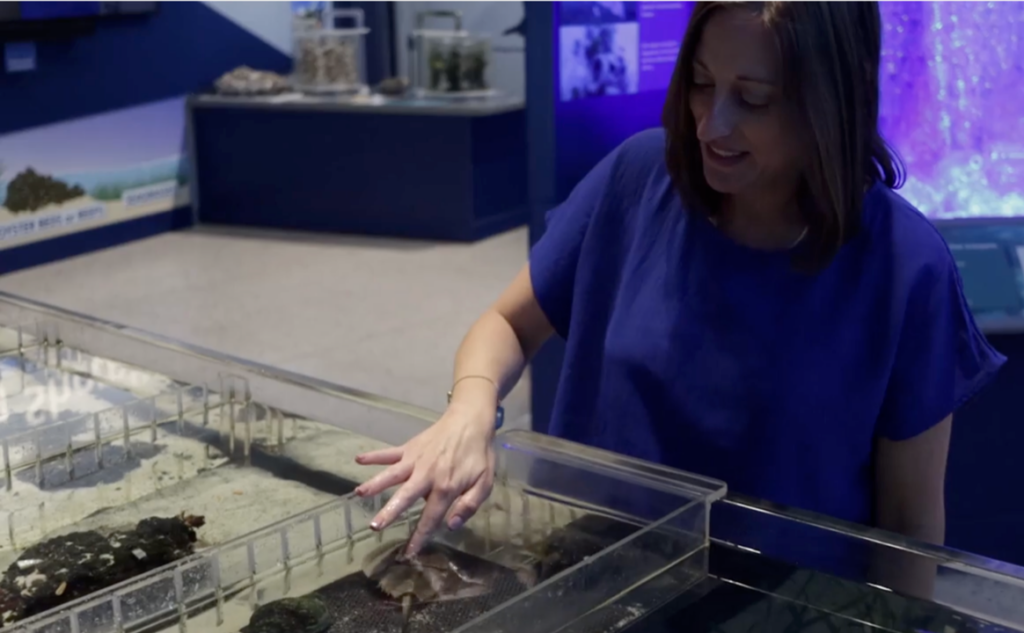Impact
Tampa Bay Watch celebrates 30th birthday, Earth Day

Since 1993, a Tierra Verde-based nonprofit has monitored and protected the region’s most valuable asset and namesake with the help of its community, corporate and local government partners.
Tampa Bay Watch officially kicked off its anniversary celebrations Feb. 16. However, reflecting on three decades of organizing scientists, students and citizen volunteers to restore Florida’s largest open-water estuary carries more significance in April.
National Earth Month culminates with Earth Day – today – when environmentally minded people and organizations across the U.S. and 141 other countries collectively recognize the importance of preserving natural resources.
Earthday.org calls it the “world’s largest secular observance,” with over a billion people commemorating the occasion.
“For me, the message is that every one of us can make a difference every day,” said Molly Robinson, annual giving manager for Tampa Bay Watch. “It doesn’t have to be a huge, difficult lift. Just being conscious of what you’re doing in your own space.”
Robinson’s organization takes the “watch” in its moniker quite literally, as its headquarters houses Florida’s first U.S. Coast Guard-approved lighthouse in 54 years. Its beam guides boaters entering the bay, and the 74-foot tall structure mirrors a facility in Boca Grande.
Tampa Bay Watch also operates the Discovery Center at the St. Pete Pier, which provides hands-on activities promoting sustainability. The organization also operates daily eco-tours from its vessel docked at the “world-class” urban amenity.

The Tampa Bay Watch lighthouse at its Tierra Verde headquarters.
For 30 years, however, Tampa Bay Watch has focused on restoring what Robinson said was “a nearly dead estuary” in the 1970s.
“It was dirty and polluted, and there was not thriving marine life,” she added. “Tampa Bay is a cleaner, healthier and more thriving environment because of the work we – and our volunteers – do.”
An ongoing, primary initiative is restoring oyster beds. According to Tampa Bay Watch’s website, just 171 acres of habitat remain, representing an 85% loss. It launched the Community Oyster Reef Enhancement (CORE) program in the early 2000s to help restore the “ecosystem engineers.”
Oyster reefs create a habitat for other marine life. They also provide a food source for a diverse array of animals and protect against shore erosion.
Most importantly, a single oyster can filter between one and five gallons of seawater every hour.
Tampa Bay Watch helps residents and organizations create vertical oyster gardens made of recycled shells. Juvenile mollusks attach to and develop on the materials suspended from docks, which grow vertically faster than sea-level rise.
The nonprofit also builds oyster shell bags specifically designed to fit restoration sites around the region. Recently, in a stroke of ingenuity, Tampa Bay Watch officials have utilized recycled porcelain from old toilets to create oyster reef balls.
The ultimate goal is to reduce nutrients from fertilizers, runoff, septic seepage and wastewater spills. Those issues increase as the area experiences exponential growth.
“People want to live on the water, and that reduces habitat,” Robinson said. “We need to be concerned if the seagrasses are healthy. Are the scallops thriving? Are the seahorses thriving – they’re real indicators of the health of the bay. It’s important to do the research and pay attention to the water, and we feel really good about that.”

According to recently released mapping results from the Southwest Florida Water Management District, seagrasses throughout Tampa Bay declined by 12%.
Other organizations also feel good about Tampa Bay Watch’s three decades of work. St. Petersburg city officials are celebrating Earth Day with the nonprofit while building an oyster bar, planting seagrasses and beautifying Lassing Park this morning.
Brittany Ranew, a global real estate advisor with Sotheby’s International, is one of Tampa Bay Watch’s many corporate partners. She is also a popular podcast host who dedicated her April content to highlighting the importance of the organization’s work.
“I work with people who are moving here because of our water,” Ranew said. “We can’t enjoy that for the future generations if we’re not taking care of our local ecosystem.”
Titled St. Pete Soul, the podcast and related YouTube videos typically showcase small businesses. However, Ranew is also a vocal proponent of using native landscaping to mitigate harmful nutrients from reaching local waterways.
She noted the “circular ecosystem” also attracts native birds and bees. The longtime Tampa Bay Watch supporter decided Earth Month provided a fitting time to highlight the nonprofit’s sustainability efforts rather than local businesses.
While Ranew said financially supporting organizations working to protect the area’s natural resources is critical, she believes it is “really about the individual effort” and everyday actions.
“I think, whenever you’re aware of a topic like that, you start to research it and learn little things as you go and just make little tweaks to your lifestyle,” Ranew said. “All of that kind of adds up in the end.”

Brittany Ranew explores one of Tampa Bay Watch’s touch tanks, located inside the Discovery Center at the St. Pete Pier.
Robinson noted that Tampa Bay Watch often conducts its work and expands community projects “very quietly.” Although that has changed some due to its 30th anniversary and Earth Day, she called people like Ranew making an effort to showcase the organization “wonderful.”
In addition, the outside messaging reaches people unaware of Tampa Bay Watch’s efforts and helps raise much-needed funding. Robinson relayed that it also “reinforces the fact that we’re not in this alone.”
For more information, visit the Tampa Bay Watch website here.







